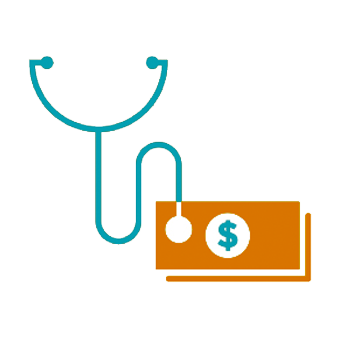Hilltop staff made several presentations at the 2014 AcademyHealth Annual Research Meeting (ARM) held June 8 through June 10 in San Diego. Director of Medicaid Policy Studies David A. Idala, MA, delivered this presentation in a session titled What Can We Learn from Patients with High Costs and High Utilization?
Hilltop staff made several presentations at the 2014 AcademyHealth Annual Research Meeting (ARM) held June 8 through June 10 in San Diego. Hilltop Deputy Director Michael A. Nolin, MA, presented this poster at the State Health Policy Interest Group meeting.
Since the enactment of the Affordable Care Act in 2010, there has been consistent federal guidance employing and clarifying its provisions. Hilltop develops regulation summaries to assist state and local policymakers in their implementation of health reform.
On March 10, 2014, the Internal Revenue Service (IRS) issued a final rule on Information Reporting of Minimum Essential Coverage. This document provides a high-level summary of this rule and highlights key changes to the regulations since the issue of the proposed rule.
This is the second chart book in a series of two that explores service utilization and expenditures for Medicaid-funded long-term services and supports in Maryland. This chart book provides information about Maryland Medicaid participants who received services through the Autism Waiver in state fiscal years (FYs) 2009 through 2012. Hilltop updates the chart books annually.
Hilltop Policy Analyst Jessica Skopak, JD, PhD, presented a poster at the 22nd Annual Meeting of the Society of Prevention Research, Comprehensive and Coordinated Prevention Systems: Building Partnerships and Transcending Boundaries, held May 27-30, 2014, in Washington, DC. This poster describes Hilltop’s evaluation of the partnership component of the Maryland Asthma Control Program.
This is the ninth issue brief in a series released by Hilltop’s Hospital Community Benefit Program. This brief continues the program’s examination of state-level community benefit oversight by focusing on the ten states that require hospitals to develop implementation strategies.
Since the enactment of the Affordable Care Act in 2010, there has been consistent federal guidance employing and clarifying its provisions. Hilltop develops regulation summaries to assist state and local policymakers in their implementation of health reform.
On March 10, 2014, the United States Department of the Treasury, Internal Revenue Service (IRS) issued a final rule on Information Reporting by Applicable Large Employers on Health Insurance Coverage Offered under Employer-Sponsored Plans. This final rule explains the reporting requirements for large employers and provides information on various methods of reporting employee information to the IRS. This document provides a high-level summary of the rule.
This report describes the services The Hilltop Institute provided to the Maryland Department of Health and Mental Hygiene (DHMH) under the 2013 Memorandum of Understanding between Hilltop and DHMH. The report covers state fiscal year 2013 (July 1, 2012, through June 30, 2013). Hilltop’s interdisciplinary staff provided a wide range of services, including: Medicaid program development and policy analysis; HealthChoice program support, evaluation, and financial analysis; long-term services and supports program development, policy analysis, and financial analytics; and data management and web-accessible database development.
The Hilltop Institute, under agreement with the Maryland Health Benefit Exchange, has developed a Health Care Reform Simulation Model. The simulation model projects enrollment in the various health care coverage programs mandated by the Patient Protection and Affordable Care Act (ACA). It also projects increases in health care expenditures and estimates the economic impact of implementing the ACA on the state of Maryland through fiscal year (FY) 2020.
The simulation model projects the flow of new funds through the state economy resulting from the provision of health care coverage to newly insured individuals. Furthermore, the simulation model uses a standard economic analysis technique to forecast additional economic activity that will be generated from implementing the ACA.
The Simulation Model Projections show the economic impact of the ACA.
The Hilltop Institute, under agreement with the Maryland Health Benefit Exchange, has developed a Health Care Reform Simulation Model. The simulation model projects enrollment in the various health care coverage programs mandated by the Patient Protection and Affordable Care Act (ACA). It also projects increases in health care expenditures and estimates the economic impact of implementing the ACA on the state of Maryland through fiscal year (FY) 2020.
The simulation model projects the flow of new funds through the state economy resulting from the provision of health care coverage to newly insured individuals. Furthermore, the simulation model uses a standard economic analysis technique to forecast additional economic activity that will be generated from implementing the ACA.






